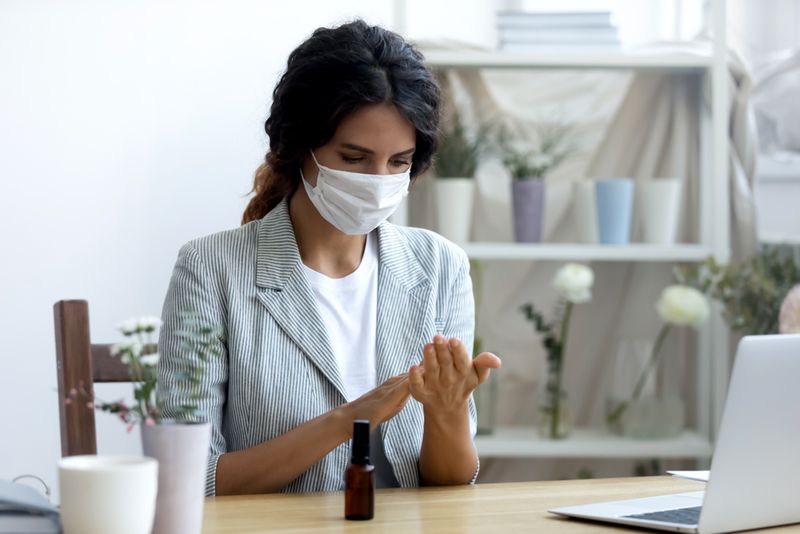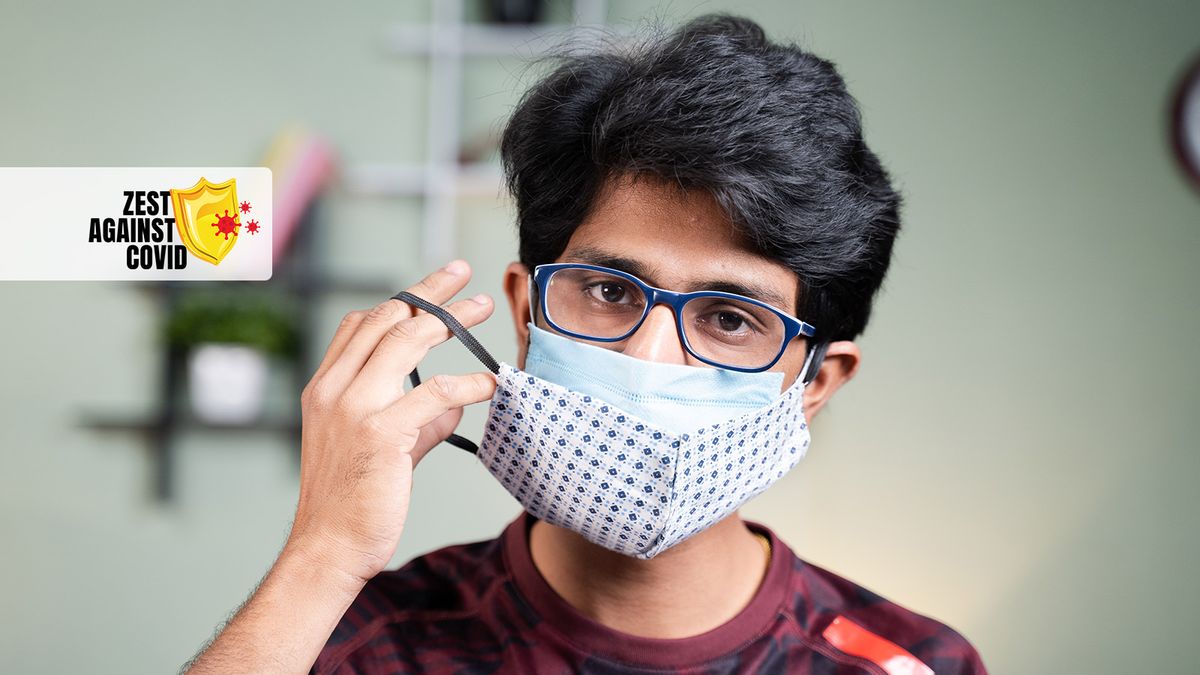As the second wave of COVID-19 grips the nation, doctors and healthcare workers are increasingly recommending double masking, especially in public places. There are many videos on social media doing the rounds that talk about what masks are suitable against the new double mutant Coronavirus, and how to layer them.
Dr Amit Saraf, director internal medicine, Jupiter Hospital Thane and Dr Dillon D’Souza, ENT surgeon and head and neck surgeon, Jaslok Hospital and Desa’s ENT Hospital, explain the dos and don’ts of masking.
When and why do you double mask?
Dr Saraf: Double masking is advocated in individuals who are immune compromised, such as cancer victims and HIV patients. It is also ideal for medical personnel and paramedical personnel, such as physiotherapists and home care givers, who come in close contact with COVID patients.
Dr D’Souza: Viral particle size and size of pores in mask materials determine the efficacy of masking in airborne disease pandemics. Respiratory infections can be transmitted through droplets of different sizes. A droplet of less than five micrometers in diameter is called a droplet nucleus or aerosol and one that is more than five to 10 micrometers in diameter is a respiratory droplet. In cases of COVID-19, respiratory droplets are a major route of transmission of the virus. 80 to 90 percent of aerosol particles are less than one micrometer in diameter, the pore (holes) size of N95 masks is 0.1 to 0.3 micrometers and that of a surgical mask is 0.3 to 10 micrometers and the particle size of the coronavirus is 0.1 micrometers.
The mask buying guide

Dr Saraf: Any standard company mask is ok, in fact at times even a normal scarf, muffler can be used, as long it covers the nose and mouth completely. It is important to note that masks with a valve are to be strictly avoided as they let out exhaled air which can spread infection.
Dr D’Souza: When choosing fabrics for face masks, fabric porosity which is the amount of airflow possible though the fabric is important. This depends on the thickness and thread count or density of the weave.
• Choose masks that have two or more layers of washable breathable fabric. The standard advisory is inner layer of absorbent material like cotton, middle layer of non-woven nonabsorbent material like polypropylene and outer layer of nonabsorbent material like polyester or polyester blend .
• Completely cover the nose and the mouth.
• Should fit snugly against the sides of the face and not leave gaps.
• Should have a clip or nose wire to prevent air from leaking over the top of the mask.
• Avoid masks that make it difficult to breathe like vinyl, and those that have exhalation valves or vents that allow virus particles to escape.
Reusing masks
Dr D’Souza:
• Cloth mask (Wash) – Should be washed properly and frequently and left to hang and air dry.
• Surgical mask (Fold, tie, wrap) – It should be removed chin upwards using the string loops and be careful not to touch the front portion while taking off the mask. After taking the mask off, please fold it half inwards, such that droplets from mouth and nose are not exposed. Then, fold the mask into another half, until it looks like a roll. Wrap the mask in a tissue paper or polythene bag and immediately discard it.
• N95 respirator – Remove the mask holding the edges where the straps are attached without touching the inside or outside after washing hands.
• Wash hands after handling the mask. Handle the mask without disturbing it too much so particles on the mask do not get shaken into the air. Use a paper bag to store the mask or plastic Ziploc and use the same bag to dispose of the mask.
Most face masks are disposable and are for one-time use only. Ideally, face masks should not be used once they are soiled, or the inner lining gets moist. In an emergency or during shortage, they can be reused.
• Cloth mask – Can be properly washed, disinfected, dried and reused.
• Surgical mask – If it’s dry and the layers physically intact and undamaged, put it in a zip lock pouch with a desiccated gel which will dry it .If the mask is intact and not torn, it can be reused for 3 days. If it’s worn by an infected person, it should never be reused or shared.
• N95 respirator – When you are not using it, store it in a closed plastic container and dispose of and regularly clean the storage containers. When reusing the N95 respirator, leave a used mask in the dry atmosphere for 3-4 days to dry it out. Polypropylene in N95 is hydrophobic and contains zero moisture.
• It is best to use four N95 masks and number them 1 to 4. On day 1 use mask 1, then let it dry for 3-4 days. On day 2 use mask 2 and then let it dry for 3-4 days. Same for Day 3 and Day 4.
• N95 masks can also be hung and dried in the oven (without contacting metal) at 70 degrees C for 30 minutes.
• UV light damages N95 masks. Maximum use should be limited to five to 10 times only.
How to double mask?
Dr Saraf: If you have two cloth masks, you can wear one on top of the other.
If you have one cloth mask and one surgical mask, the surgical mask should be the outer mask.
If you have a N95 mask, no double masking is required.
Ideally after putting on both the masks, tie the loops of the mask behind the ears or tie the draw strings, so as to ensure both the masks have a snug fit.
Dr D’Souza: The ideal mask for the covid 19 pandemic is a five layer or 8-layer mask.
One mask should be fitted first and then the second one. Cloth and surgical mask combination reduces exposure by nearly 95 percent, surgical mask first after tying a loop in the strings and arranging the pleats to avoid air escape from the sides and then the cloth mask in a way that it presses the surgical mask all around tight against the face. Surgical mask with N95 mask using the same principles as cloth and surgical masks. An additional tight fit on the face can be achieved using three rubber bands.
Dos
- Ensure you can breathe properly and talk freely.
- Walk around the house after masking to ensure fit and comfort before stepping out.
Don’ts
Use N95 with cloth masks.
Use chemical disinfectants on masks.
Use masks that are visibly soiled or damaged.
How to ensure you have masked correctly?
Dr Saraf: After wearing a mask, gently blow out from your mouth. If air escapes from any side of the mask, then it needs to be tightened using the drawstrings.
Dr D’Souza: If you have masked right, the mask gets pulled inward while breathing in and billows out while breathing out. If you feel warm air flow over the eyes or glasses fogging up there is an air leak from the top of the mask.
If you are unable to breathe freely or speak the mask is the wrong size. If the mask disturbs your vision, it is not a proper fit, or hasn’t been worn correctly.
Additional masking precautions to take if you are COVID positive

Dr D’Souza: Maintain social distancing from everyone even when masked and do not use masks with breather valves. Also, masks should be disposed daily if readymade and resusable masks changed and washed several times a day.
Unmasked COVID positive person can spread the virus up to eight feet and with mask up to two feet.
How long do you wear each mask?
Dr Saraf: Cloth masks should be discarded after the cloth appears frayed and surgical masks should be discarded after they become moist or wet.
Dr D’Souza: There is no set time, nor recommended number of masks you should use each day. It depends on what you are doing. However, if your mask gets dirty, wet or damaged, or if you touch the inside of it, then you should change to a new one. When you take it off to eat or drink, you should dispose the old mask, wash or sanitise your hands, and replace it with a new one once you have finished eating. Rule of thumb for all masks is not to exceed an 8-hour period with the same mask.
How to care for your masks?
Masks should be washed dried and stored in Ziploc pouches or paper bags. Masks that are to be reused can be stored the same way. It is important to remember the mask may have particles on the outer surface which should not be disturbed so handle gently.
How does one dispose masks and where?
Masks for disposal should be bagged in plastic or paper bags or a sealed box and disposed in a separate garbage bag.
When should you be masking up at home?
Masking at home is essential in the following situations:
- When people who don’t live with you enter the home such as relatives, repairmen or service people.
- Homes where children come back from a trip or are attending classes outside.
- Homes where the people must go out to work every day.
- Homes where anyone must move out of the house regularly for purchases or groceries.


